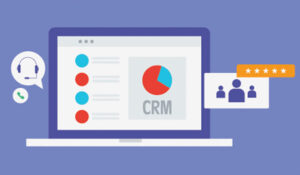CRM integration can make the difference between a passable customer experience and an incredible Cx. Here’s the lowdown.
There are two key aspects to every single act of customer service: how you communicate with your customers, and how you manage your knowledge of your customers. Simple, right? But if you run a business, no doubt you know that the complexity and potential for mischief underlying this simplicity are significant.
One of the key places things go wrong is in CRM integration. Which is to say, if you haven’t linked your customer communication system up with your customer knowledge system, you’re looking at a world of pain down the line.
If you’re a start-up, it can be tempting to defer this sort of thing. You’re Agile. You’re Lean. We get it. But trust us: you want to get this right now.
We’re going to assume a bare minimum of knowledge in this brief.
What Is CRM?
CRM stands for customer relationship management. A CRM is the piece of software that stores your customer information, helps you manage your customer communication, provides a basis for customer analytics, and improves collaboration across your business units.
If you don’t already have a CRM, you could do worse than check out HubSpot, Agile CRM, Zoho or PipeDrive.
What Types of CRM Are There?
CRM can be broken down into three broad categories: operational CRM, analytical CRM, and collaborative CRM.
Operational CRM helps you develop streamlined processes with things like sales, marketing and service automation.
Analytical CRM helps you analyse your customer relationships so you can find gaps in your Cx and opportunities to improve it.
Collaborative CRM helps you be sure your business units – say, sales and support – are referring to the same source of customer truth.
What Are the Strategic Goals of CRM?
There are many strategic goals to CRM. Here are the top three: to be more efficient (operational CRM), to improve marketing, sales and support (analytical CRM), and to coordinate comms across business units (collaborative CRM).
Straightforward.
What Is CRM Integration?
CRM integration is, simply, linking your CRM to all the touchpoints your customers use to interact with your brand. That means your CRM updates when, say, a customer fills in a web form or calls into your contact centre.
What Are the Benefits of CRM Integration?
This is hopefully getting into no-brainer territory. With a CRM tightly integrated with the rest of your customer-facing properties, you can expect the following:
- You won’t let critical information fall through the cracks. Like, those days of writing things down on a sticky note to add to the CRM ‘later’? Yeah, those are gone.
- Your business won’t sound like it has a personality disorder. When you coordinate customer information across the business, everybody has access to the same single source of truth. No more fragmented, off-point and repetitive conversations with your clients.
- You’ll be able to figure out what your customers are doing. With a good, properly integrated CRM, you’ll have access to all-new worlds of information to help you guide your sales and marketing. For example, ZaiLab’s software can see what leads are interested in based on metrics as granular as individual pageviews.
- Most importantly, you have consider the fact that any problems you introduce by failing to get CRM right will scale. Problems are not a thing you want to scale: having issues with a handful of early proof-of-concept customers may seem to be something you can deal with, but these things quickly get out of hand. Having issues with hundreds of thousands of customers is something that can bring your business to its knees.
How Do I Integrate My CRM?
Okay, this is way beyond the scope of this article. But in short, you have three options:
Plug and play. Many CRMs and related pieces of software have out-the-box integrations you can just wire up, configure and forget. Neat.
Use a third-party middleman. With tools like Zapier and IFTTT, you can get all sorts of web apps to splash together in the same paddle pool, no coding required.
Use an API. An API (or application programming interface) is one is for people who know what they’re doing. If you have a few developers in the wings, no probs. Your service providers may be able to hook you up too – just ask them.
Hopefully, this little overview has given you some think-fodder – and a direction for your next step. One last time: don’t leave this too late.
Author: Robyn Coppell
Published On: 8th Jun 2018 - Last modified: 12th Jun 2018
Read more about - Guest Blogs, Zailab















